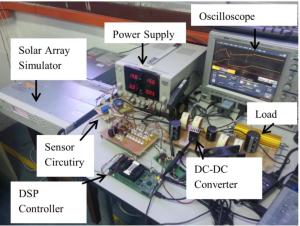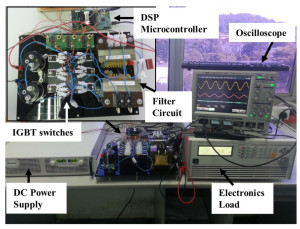Title: Transformerless Photovoltaic Inverter with MPPT Controller for Photovoltaic Array Under Partial Shading Condition

In order to overcome the self-heating issue in the photovoltaic (PV) module during the partial shading condition, the bypass diode is added into the PV module. But, the use of bypass diode cause the multiple MPPs appear in the power-against-voltage (P–V) curve of the PV array. Conventional local search space algorithm such as perturbation and observation (P&O) and incremental conductance (Inc Cond) may fail to track the global MPP (GMPP) which has the maximum power under partial shading condition. Thus, a modified Inc Cond algorithm is introduced to track the GMPP during partial shading condition. In the proposed algorithm, three consecutive points are tracked continuously. If the MPP which has the maximum magnitude is located in between of the others MPP, the algorithm will terminate the searching process and operates at the GMPP. The tracking process will keep going until the searching reaches the left end or right end of the P–V curve if the maximum magnitude does not located in between of the other MPP. In order to ensure the fast tracking of the three MPPs, a novel voltage perturbation method is introduced to increase the response of the algorithm in tracking the MPPs.

Apart from that, a transformerless PV inverter is also introduced to convert the direct current (DC) source of the PV array into alternating current (AC) source. The transformerless inverter has the advantages such as lower cost, size and higher efficiency as compared to the inverter with transformer. But, there is leakage current issue in the transformerless PV inverter. Thus, a new six switches and two diodes PV inverter which is able to reduce the leakage current is introduced. The effect of the junction capacitance of the switches in the transformerless PV inverter is taken into consideration during the design of the inverter. The proposed inverter has the ability to reduce the leakage current as compared to the conventional H5 topology.
Last Update: 22/11/2022